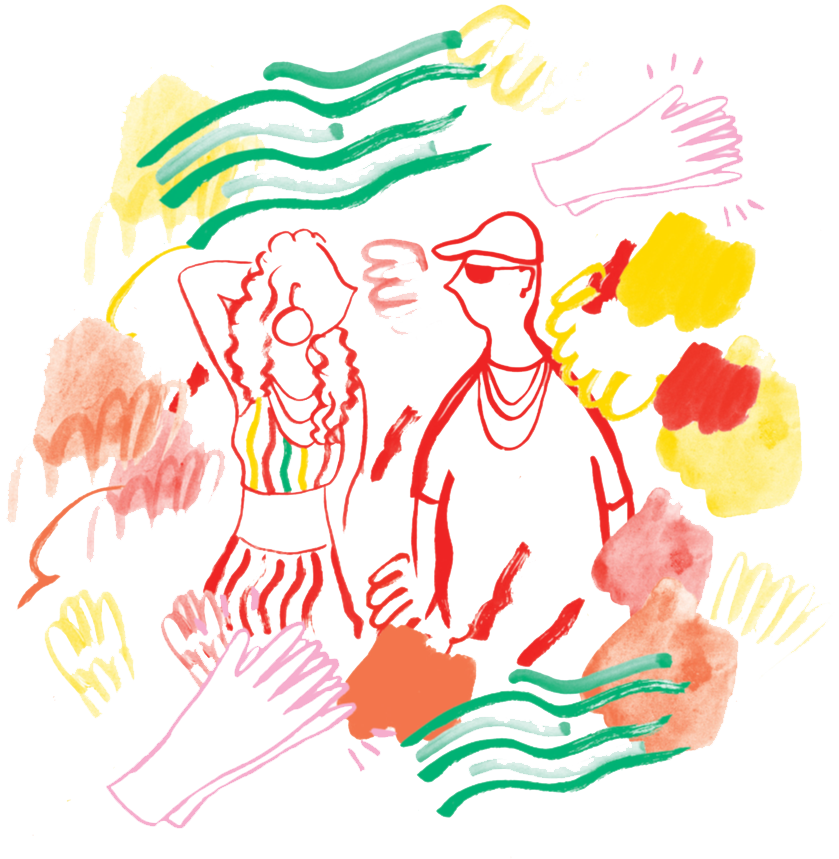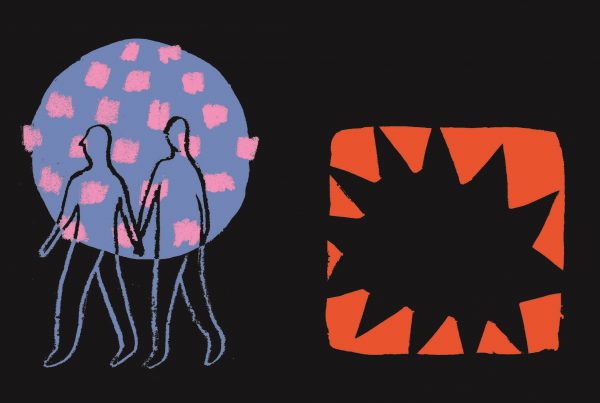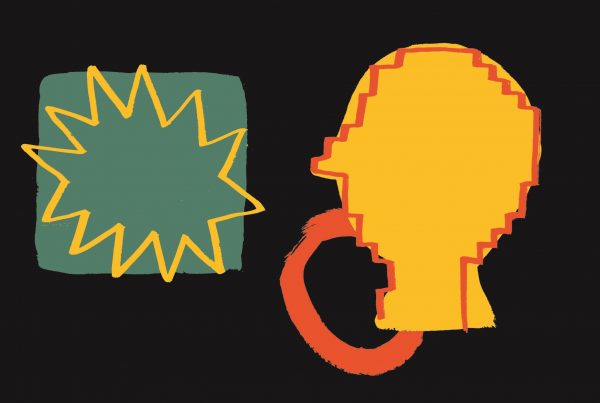Vinícius Torresan is a Brazilian journalist writing on Latin America’s politics, economy and culture for the Latin America Business Stories (LABS) website.
Houve a salsa e o bolero, cujo alcance foi limitado por uma visão regionalista e folclórica da cultura latina, o fenômeno Macarena, tão expressivo quanto efêmero, e artistas de relevância como Shakira e Ricky Martin, cujo sucesso global esteve amparado numa negociação permanente entre o pop latino e o pop anglo-saxão, entre as suas raízes e aquilo que era exigido pelo mercado estadounidense.
Até que chegou 2017. Despacito, dos porto-riquenhos Luis Fonsi e Daddy Yankee, explodiu. Subiu aos primeiros lugares dos tops de quase 50 países, incluindo os Estados Unidos, e tornou-se numa das canções mais ouvidas de sempre na internet, com mais de seis bilhões de visualizações somente no YouTube. Mesmo sendo cantada em espanhol, mesmo sendo uma música plena de latinidade.
Por trás do sucesso planetário e transversal de Despacito há uma combinação de fenômenos tecnológicos, mercadológicos, sociais e culturais que reorganizou o consumo musical e girou os holofotes para o reggaeton. E para decifrar esse boom temos de nos centrar numa palavra: streaming.
Daddy Yankee acompanhou várias etapas da trajetória do reggaeton (gênero que nasceu entre Panamá e Porto Rico, fruto do cruzamento entre dancehall, hip-hop e reggae), desde o mundo analógico da década de 1990 passando pelos anos 2000, quando lançou o hit Gasolina, até à dominação mundial com Despacito, via YouTube, Spotify, Deezer e outras plataformas de streaming. Despacito atingiu uma dimensão que outros êxitos latinos ainda não tinham conseguido atingir. “Despacito chegou no momento certo, no pico das mídias sociais e na ascensão das plataformas de streaming”, analisa Mauricio Mendoza, Head de Conteúdo e Relacionamento com a Indústria da Deezer.
O forte consumo musical do público latino também contribuiu para a escalada global do reggaeton. De acordo com o Global Music Report de 2019, da IFPI (International Federation of the Phonographic Industry), a América Latina registrou, pelo quarto ano consecutivo, a maior taxa de crescimento de consumo de música do mundo, com um aumento de 16,8% em relação ao ano anterior. A participação do streaming nas receitas globais é de 46,9%, enquanto na América Latina ele é responsável por 67% do faturamento. Já o relatório Listening Music de 2019, também da IFPI, revelou que dos ouvintes considerados “ativos” – com consumo musical de 23,7 horas semanais – 47% são latinos, quase o dobro da média europeia, que está nos 24%.
Em paralelo aos números expressivos de ouvintes está o domínio de estratégias de visibilidade cruciais na era do streaming, como os videoclipes e as colaborações (ou featurings). A lógica é simples: quanto mais parceria o artista fizer, maior é a sua penetração em playlists e maior é a possibilidade de chegar a públicos mais alargados. E não há gênero que trabalhe tão unido como o reggaeton: 26 das músicas do Top 30 Hot Latin Songs da Billboard de 2019 são assinadas por mais de um artista de reggaeton.
No YouTube – que, de acordo com a IFPI, é a plataforma preferida de 49% dos ouvintes latino-americanos –, oito dos 10 videoclipes mais visualizados em 2018 foram assinados por artistas latinos, geralmente amparados em featurings. Estas parcerias estratégicas não se limitam ao mesmo idioma. Nos últimos anos, multiplicaram-se as músicas cantadas em spanglish, ou seja, numa fusão entre o espanhol e o inglês. Tusa (2019), de Karol G e Nicki Minaj, é ilustrativa desse modus operandi: uma reggaetonera e uma rapper se juntam, cada uma em seu idioma, para tornar a música acessível a um público mais vasto.
A receita já havia dado certo com I Like It (2018), de Cardi B, Bad Bunny e J Balvin. No Brasil, Anitta passeou não só entre idiomas, unindo o spanglish ao português, mas também entre a música brasileira e o reggaeton – fez parcerias com J Balvin, Maluma, Ozuna e Sofia Reyes. Só em 2018, a cantora atingiu 1,7 bilhões de visualizações no YouTube.

Diluir fronteiras
O spanglish, as parcerias internacionais e a fusão de gêneros musicais compõem a flexibilidade sonora globalizante da era digital. Por que não mesclar reggaeton, rap, hip-hop, R&B e funk brasileiro para diluir as fronteiras entre gostos musicais e culturas e, assim, chegar aonde o streaming permite – ou seja, a todos os lugares? Essa facilidade de distribuição e alcance, aliás, descentraliza o consumo e transforma cidades supostamente periféricas da indústria musical em polos influentes. De acordo com números oficiais do Spotify, Santiago do Chile e Cidade do México são duas das cidades onde mais se ouve reggaeton: a primeira conta com 400 milhões de plays mensais, a segunda com 200 milhões.
Como polo produtor, a Colômbia fica à frente, com artistas que levam o reggaeton além-fronteiras. “Artistas como J Balvin, Maluma e Karol G explodiram globalmente graças à indústria do reggaeton de Medellín. Eles fazem tudo com um alto nível de profissionalismo: produção musical, vídeos, direção de arte”, observa Mauricio Mendoza, da Deezer. Nos EUA, que continua a ser a torre de controle da indústria musical, o reggaeton tem como epicentros de planejamento e produção Miami e Los Angeles. E é o streaming que está a impulsionar a relevância comercial da música latina nos EUA.
Para compreender o atual pico do reggaeton e da música latina no mundo é preciso também olhar para questões demográficas. Por mais protecionistas e racistas que sejam as políticas do governo de Donald Trump, a população latina dos EUA está cada vez maior e cada vez mais integrada na sociedade, manifestando a sua cultura com orgulho e em seu próprio idioma, o segundo mais falado no país. Segundo dados do Instituto Cervantes, os EUA já concentram mais falantes de espanhol do que a Colômbia e Espanha, e a previsão é de que ultrapassem o México em 2050, tornando-se, assim, no país com mais falantes de espanhol no mundo. Tudo isso faz com que a música cantada em espanhol esteja a ganhar terreno à música anglo-saxônica. Segundo um relatório da BuzzAngle Music de 2018, a música latina se tornou mais popular nos EUA do que o country e a electronic dance music (EDM).
Hoje, apesar de estarmos testemunhando uma nova onda de políticas reacionárias e antidemocráticas, há menos fronteiras entre idiomas, países, culturas, gêneros musicais. E o streaming ajudou a derrubar esses muros, abrindo caminho para a expansão global do reggaeton – que já conquistou o mundo e um lugar de topo na música pop.
English Version
Streaming, Spanglish and collaborations: A Primer To Reggaeton’s Success Story
One can think of salsa and bolero, which reach was limited by a regionalist and folkloric perception of Latin culture, the very expressive and ephemeral Macarena phenomenon and major artists such as Shakira and Ricky Martin, whose global success was supported by a continuous negotiation between Latin and Anglo-Saxon pop, as well as between their roots and the demands of the US market.
Up until 2017. Despacito, from Puerto Ricans Luis Fonsi and Daddy Yankee, went through the roof. It reached the top in almost 50 countries, including the United States, and became one of the most popular songs on the internet, with over six billion views on YouTube only, in spite of its language (Spanish) and Latin vibe.
Daddy Yankee kept up with various stages of reggaeton’s journey (the genre was born somewhere between Panama and Puerto Rico from a blending of dancehall, hip-hop and reggae), from the analogic world of the 90’s, through the 2000s, when he released Gasolina, and up to world domination with Despacito, via YouTube, Spotify, Deezer and other streaming platforms. Despacito reached a level that no other Latin hit had been able to reach. “Despacito was released at the right time, at the peak of social media and on the uptake of streaming platforms ”, analyses Mauricio Mendoza, Head of Content and Communications at Deezer.
The strong music consumption by the Latin-American audience also contributed to reggaeton’s global rise. According to the IFPI’s (International Federation of the Phonographic Industry) 2019 Global Music Report, the consumption of world music in Latin America recorded, for the fourth consecutive year, the highest growth rate, with an increase of 16.8% compared to the previous year. While streaming platforms account for 46.9% of global revenue, in Latin America, this rate reaches 67%. The 2019 Listening Music’s report, also by the IFPI, already showed that of the so called “active” listeners, – those with 23.7 hours of music consumption per week – 47% are Latinos, almost twice the European average, which stands around 24%.
In addition to this impressive number of listeners is a perfect command of the visibility strategies that are key to the streaming era, such as videoclips and collaborations (or featurings). The logic is simple: the more collaborations, the higher his or her playlist penetration rate and the higher the opportunity to reach a wider audience. And no music genre is better at joint work than reggaeton: of Billboard’s 2019 Top 30 Hot Latin Songs, 26 are performed by more than one reggaeton artist.
On YouTube – which is, according to the IFPI, the preferred platform of 49% of Latin-American listeners –, 8 of the 10 mostly viewed videoclips in 2018 were performed by Latin artists, generally with the support of featurings. These strategic collaborations aren’t limited to the same language. Over the last few years, the number of songs in Spanglish – a fusion between Spanish and English – has increased. Tusa (2019), by Karol G and Nicki Minaj, reflects this modus operandi: a reggaetonera and a rapper get together, each singing in their language, to reach a wider audience.
This recipe had already proved its worth with I Like It (2018), from Cardi B, Bad Bunny and J Balvin. In Brazil, Anitta played not only with languages, mixing Spanglish with Portuguese, but also with Brazilian music and reggaeton – collaborating with J Balvin, Maluma, Ozuna and Sofia Reyes. Only in 2018 did the singer reach 1.7 billion views on YouTube.
Diluting Boundaries
Spanglish, international collaborations and the fusion between music genres are the key features of this flexible and global music that characterises the digital era. Why not mixing reggaeton, rap, hip-hop, R&B and Brazilian funk to dilute the boundaries between musical tastes and cultures and, in doing so, getting where the streaming technology allows us to get – i.e., everywhere? In fact, with this ease of diffusion and reach, consumption is decentralised and cities that were supposedly at the margins of the music industry are turned into powerhouses. According to Spotify’s official data, Santiago do Chile and Mexico City are amongst the cities with the highest number of reggaeton listeners: 400 million and 200 million monthly plays respectively.
As a production centre, Colombia is at the top, with artists taking reggaeton beyond national borders. “Artists like J Balvin, Maluma and Karol G became international stars thanks to the Medellin reggaeton industry. Everything is done with a high degree of professionalism: music production, clips, artistic direction”, observes Mauricio Mendoza, from Deezer. In the US, which remains the music industry’s control tower, Miami and Los Angeles are the main reggaeton hubs for planning and production. And it’s the streaming technology that is driving the commercial success of Latin music in the US.
In order to appreciate the current peak reached by reggaeton and Latin music internationally, demographics should also be examined. No matter how protectionist and racist Donald Trump’s administration policies are, the Latino population in the US keeps growing and is increasingly well integrated in the social fabric, displaying their culture with pride and always in their own language, the second most spoken language in the country. According to figures of the Instituto Cervantes, the US has more Spanish speakers than Colombia and Spain and they should overtake Mexico by 2050, thus becoming the country with the highest number of Spanish-speakers in the world. The result is that music sang in Spanish is outperforming Anglo-Saxon music. According to a report published by BuzzAngle Music in 2018, Latin music has become more popular in the US than country and electronic dance music (EDM).
Today, despite the new wave of conservative and antidemocratic policies, there are less boundaries between languages, countries, cultures and music genres. And streaming has helped bringing these walls down, paving the way for the global expansion of reggaeton – which has already won the world and secured a top place in the pop music market.
/ Translation by Saoussen Khalifa



